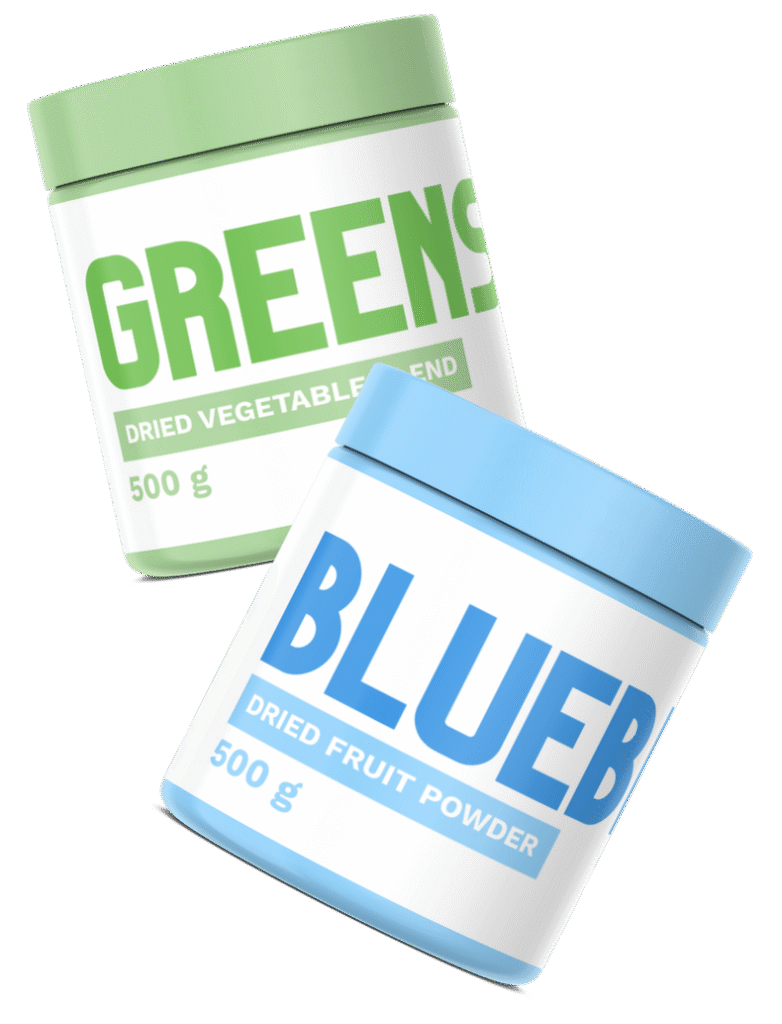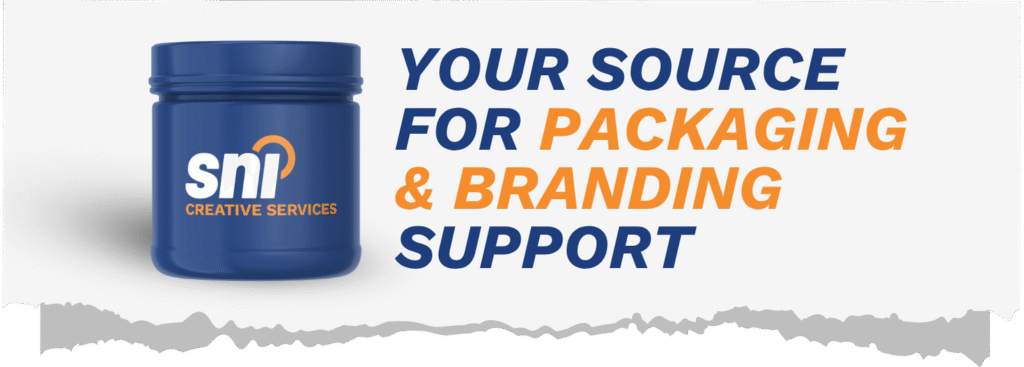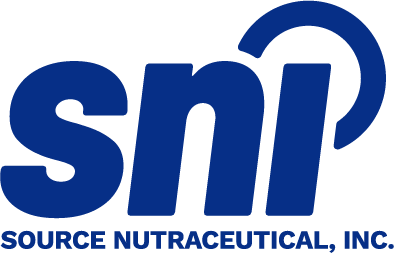A product label is often the first interaction a consumer has with a brand. It captures attention, communicates purpose, and conveys trust within seconds. However, a label’s success depends on more than just good design; it must also comply with strict regulatory standards. In Canada, where bilingual labelling, standardized Nutrition Facts, and accessibility are mandatory, brands must find the right balance between creativity and compliance.
Effective label design tells a story that guides the eye, highlights what matters most, and meets all legal and readability requirements. This article explores how thoughtful visual hierarchy, modular design systems, and emerging technologies help brands create packaging that is compliant, clear, and consumer focused.
How Visual Hierarchy Influences Consumer Understanding
For most consumer goods, visual hierarchy begins with the brand and product name. This is followed by net quantity, core claims, and any mandatory labelling elements. Supporting details such as ingredient lists, directions for use, and disclaimers appear afterward, arranged carefully so they do not compete with the essentials. When visual hierarchy works well, the result feels intuitive. Shoppers expect to find Nutrition Facts or Drug Facts panels in familiar locations, and they rely on visual cues such as size, colour, and contrast to make sense of a product at a glance, even from a crowded shelf.

Visual hierarchy matters because it directs attention. A clear system reduces mental effort, speeds up scanning, and makes complex information easier to digest. Most consumers read packaging in an F-shaped pattern: their eyes begin at the top left, move horizontally, and then drop down the panel. Labels designed to follow this natural flow are far more effective.
Accessibility must also be considered. People with low vision, dyslexia, or other reading challenges need to be able to parse the information without strain, which makes visual hierarchy not just a design strategy but an inclusion practice.
The First Glance: Designing Labels that Capture Attention
What consumers notice first is rarely a coincidence. From a shelf distance, the boldest and largest element almost always captures attention. This is why the brand and product name serve as the visual anchor. They should appear in large type and be supported by high-contrast colour pairings such as black on white or navy on yellow that remain legible even at a quick glance.
The most effective labels often position the logo and product name as a unit in the top-left zone, which aligns with how most people scan information. Beneath this, a short descriptor such as “Fragrance-Free” or “For Sensitive Skin” reinforces the product’s purpose. Key details such as volume, SPF rating, or dietary claims gain visibility through bold type, coloured blocks, or placement within a defined shape.
Strong visual hierarchy tends to follow a logical sequence: headline (brand and product), subhead (variant or type), primary claim, and supporting details. Three to five levels of information are usually enough to convey everything clearly. Adding more than that risks clutter and slows comprehension.

Building Consumer Trust Through Visual Hierarchy

Consumers trust product labels that feel professional and truthful. Overcrowded, exaggerated, or inconsistent packaging quickly undermines confidence. A straightforward and factual tone is far more effective. Ingredients should be listed with familiar names instead of jargon, and descriptive language should inform rather than oversell.
Consistency across a product line is also critical. Fonts, colours, and icons should remain stable across SKUs so that recognition becomes automatic. Certification marks such as “organic,” “cruelty-free,” or “GMP” should be easy to find but not forced into the same visual space as primary claims. Grouping related information together and surrounding it with white space helps the eye move comfortably. When type size, margins, and spacing follow a steady rhythm, the label conveys order, reliability, and trust.
Balancing Creativity and Regulatory Compliance in Label Design
Design hierarchy must also respect regulations. Labels must include mandatory elements, which are non-negotiable. Nutrition Facts or Drug Facts panels, ingredient lists, allergen warnings, manufacturer details, and legal disclaimers all need to be present, legible, and positioned according to requirements.
Nutrition Facts and Drug Facts panels, for example, must appear in boxed formats. They are usually located on the back or side panel and must always be in high-contrast text. Ingredient lists are typically placed nearby and must use common names to ensure consumer understanding. Net quantity belongs on the principal display panel, most often in the lower third, and must be expressed in approved units. Allergen statements should sit close to the ingredient list and be bolded for visibility. Manufacturer contact details and legal disclaimers are placed in designated areas, with minimum font sizes applied to preserve legibility.


Typography for regulatory text should not fall below six to eight points. Contrast must also be strong enough to meet accessibility standards. To keep hierarchy intact, designers can use a grid that separates mandatory content from marketing claims while maintaining visual balance.
5 Core Design Principles to Enhance Label Hierarchy

A strong label hierarchy is built upon five interconnected design elements that work together to create clarity, balance, and visual flow. When carefully executed, these elements ensure that important information stands out, while supporting details remain accessible and cohesive within the overall design. Together, they form the foundation of effective communication, helping consumers navigate the label effortlessly and fostering trust through both aesthetics and readability.
In the following sections, we will explore each of these five elements, examining how thoughtful use of proportion, colour, typography, spatial organization, and placement can transform a label from merely compliant to strategically compelling.
1. Size: Directing Immediate Attention

Size is the most immediate visual signal. Larger elements naturally draw attention first, which is why brand and product names dominate the label. Medium-sized claims follow, while supporting and regulatory text is set at smaller scales. Scaling must be adjusted for different packaging formats. For example, a 355 millilitre can (12 ounces) requires different proportions than a one-litre pouch (32 ounces). Maintaining consistent size hierarchy is essential both at shelf distance and in hand.
2. Colour and Contrast: Highlighting Key Information
Colour and contrast influence both legibility and emphasis. High-contrast pairings, such as navy on cream or black on white, highlight critical information. Brands should adhere to their established colour palettes for recognition while using one accent colour to emphasize primary claims. Labels should always be tested under retail lighting conditions because glare or shadows can affect readability.
3. Typography: Clarity Through Font Choices
Typography should generally be limited to no more than two font families or one versatile superfamily. Bold weights are most effective when used sparingly for headings or key claims. Decorative fonts should be avoided in body copy to maintain clarity and readability.

4. White Space: Enhancing Readability
White space is not empty space. It separates clusters of information, provides breathing room for key claims, and improves overall legibility. Grouping related items together, such as ingredients with directions, helps maintain a logical hierarchy and prevents visual clutter.
5. Placement: Guiding the Eye Naturally

Placement determines the reading flow. A top-to-bottom, left-to-right sequence aligns with natural eye movement and common scanning patterns such as F or Z. Visual cues like icons, arrows, or colour blocks can guide the eye through the hierarchy without overwhelming the design.
Beyond Text: Utilizing Visual Elements and Shapes to Reinforce Label Hierarchy
Effective label design transcends typography, incorporating visual elements and shapes to guide consumer perception and enhance product appeal. Research in cognitive psychology and Gestalt principles underscores the impact of these design choices on consumer behavior.
Leveraging Finishes to Capture Attention
Finishes such as embossing, varnishes, or spot UV treatments can draw the eye and create depth. For instance, a glossy band across a matte surface can highlight a key claim before the consumer even reads it. Studies in visual attention suggest that contrast and texture naturally attract the human gaze, making finishes an effective way to direct focus toward important information.
The Psychological Impact of Shapes
Shape influences how consumers perceive products. Rectangles often convey order and precision, circles feel approachable and friendly, and custom die-cuts communicate craftsmanship or innovation. Research in Gestalt psychology indicates that people naturally organize visual elements into patterns, meaning that familiar shapes can help create structure and improve comprehension. Small notches, curves, or angled edges can make a product stand out on the shelf while remaining aligned with brand identity.

Crafting a Visual Narrative
The order in which information appears on a label creates a visual script that shoppers process almost instantly. Eye-tracking and consumer research show that a clear visual hierarchy guides the eye in predictable stages and greatly improves brand recall and purchase decisions. In practice, the brand and product name serve as the introduction, orienting shoppers to who and what the product is. Priority claims and benefits form the persuasive centre of the narrative, helping consumers decide quickly whether the product meets their needs. Finally, mandatory information such as nutrition facts, ingredient lists, and regulatory statements reassures by signalling safety, compliance, and transparency.

This structure aligns with established psychological principles. The serial position effect demonstrates that people remember the first and last items in a sequence more easily than those in the middle, meaning early and late visual cues have a stronger impact on memory. Sequential cues on a label, such as a logical top-to-bottom or left-to-right flow, help the brain organize information and reduce cognitive effort. Studies using eye-tracking show that logically ordered and visually grouped elements enable consumers to find key details faster and make quicker purchasing decisions
Icons and graphics reinforce this sequence by providing rapid, language-independent communication. Health symbols, preparation icons, certification marks, and pictograms convey complex information at a glance, improving comprehension and accessibility across cultures. However, cultural studies indicate that colours and symbols can carry different meanings across markets, making validation essential. When designed thoughtfully, these sequential cues, supported by effective icons and visuals, turn packaging into a coherent story that captures attention, communicates value, and builds trust within seconds.

Common Mistakes in Label Hierarchy to Avoid
Weak hierarchy can harm even strong brands. Over-reliance on colour excludes colour-blind consumers. Using too many fonts creates confusion. Neglecting white space makes packaging feel cramped and difficult to read.
The most damaging mistake is attempting to emphasize everything. When every element competes, nothing stands out. Product name, net contents, and the main claim must always take priority, while secondary claims and certifications take supporting roles.
Testing Label Hierarchy in Real-World Conditions
The most reliable way to confirm whether hierarchy works is to test it. Designers often rely on the “squint test.” This involves stepping back six to ten feet, half-closing the eyes, and checking what stands out. If the brand name, product type, and key claim remain clear, the hierarchy is effective.
Context also influences performance. A design that looks strong on screen may not perform the same way on a shelf or in a small digital thumbnail. Small packages may require larger typography and fewer claims, while larger formats can accommodate more mid-level details. For e-commerce, additional product images can highlight key benefits and ingredients clearly at thumbnail scale.
The Future of Label Design Hierarchy: Minimalist, Modular, and Smart Design
Label hierarchy will continue to evolve as traditional design integrates with digital tools. Smart labels that use QR codes, NFC tags, or dynamic inks will provide consumers with deeper insights into batch traceability, freshness, and recalls. The basic principle, however, will remain the same. The product name and primary claim must come first, followed by scannable prompts and supporting context.
Minimalist Layouts for Clarity and Sustainability
Minimalist layouts are expected to remain a leading trend in packaging design. They use white space, strong contrast, and structured grids to meet consumer expectations for clarity, transparency, and sustainability. By reducing visual clutter, minimalist labels draw attention to the most important information and create a sense of simplicity and trust. However, effective packaging must still evoke emotion, since feelings play a central role in influencing consumer perception, preference, and purchase decisions.
Modular Design Elements and Systems for Flexibility
Brands may adopt modular label systems that allow specific elements, such as claims or flavour notes, to change without altering the overall structure. This approach offers flexibility for product variations, seasonal launches, or marketing updates while maintaining a consistent brand identity. For example, a beverage company might keep the same layout with identical logo placement, typography, and background colour while adjusting the flavour band and key claim icons for each SKU. This method preserves visual cohesion across the product line, simplifies updates, and reinforces brand recognition on the shelf.

AI and Technology in Effective Label Design
AI tools are becoming increasingly sophisticated, with the ability to predict eye movements and automatically adjust visual hierarchy. In the near future, these technologies may also assist in pre-checking labels for compliance, helping ensure that marketing objectives and regulatory requirements are both met efficiently. Brands should consider how such tools can enhance design consistency, improve consumer perception, and streamline approval workflows. Adopting and fine-tuning AI systems to align with a brand’s specific needs can provide a valuable foundation for design development or serve as an additional verification step before product launch.
Adapting to Evolving Regulations
Regulations are evolving toward stricter controls on information placement, font size, and accessibility. Modular and adaptable label systems help brands meet these requirements while preserving visual hierarchy and aesthetic appeal. Most regulatory frameworks already mandate a modular approach for presenting key information such as Nutrition Facts, medicinal or supplement details, and required symbols. It is essential to consider regulatory requirements early in the design process, as addressing them only at the final stage can result in costly redesigns and re
Final Remarks: Clarity is the Key to Effective Labels
A product label is more than a design element; it serves as a brand’s voice at the point of purchase. Every visual choice, from typography and colour contrast to placement and iconography, shapes how consumers perceive trust, quality, and relevance. A strong visual hierarchy ensures that essential information captures attention first, that claims and benefits are easy to find, and that regulatory content is presented clearly and accessibly.
As the marketplace becomes more competitive and regulations become increasingly detailed, successful labels will balance creativity with precision. Minimalist layouts, modular systems, and emerging AI tools are driving a new generation of packaging that is both flexible and compliant. The most effective labels will continue to achieve what they have always done best: guide the eye, build confidence, and tell a brand’s story clearly, one glance at a time.

Your Label, Your Story
At SNI, we combine creative design expertise with in-depth regulatory knowledge to ensure your packaging does more than look great; it complies flawlessly. From concept to print, our team helps you navigate bilingual labelling, ingredient declarations, nutrition facts, and country-specific layout requirements with precision and efficiency.
Whether you are launching a new product or refreshing an existing line, SNI ensures your packaging meets all Health Canada, CFIA, FDA, and international standards while standing out on the shelf. Our designers work closely with our regulatory specialists to create packaging that is visually compelling, fully compliant, and aligned with your brand identity.
Let SNI turn your packaging into your strongest marketing tool: clear, compliant, and consumer-ready.
🥐 More about our services here.
💡 Compliance is easy with the right support!
📩 info@sourcenutra.com
⬇️ Send us a request for support or an introductory call
FAQs
What is visual hierarchy, and why is it important in label design?
Visual hierarchy organizes information so that the most important details, such as the brand name, product type, and key claims, stand out first. At SNI, our design and regulatory teams work together to establish a clear hierarchy that improves readability, supports consumer understanding, and aligns with Health Canada and CFIA requirements.
How can I balance creativity with regulatory compliance on my product labels?
Balancing creativity and compliance starts with collaboration. SNI’s integrated approach ensures that creative concepts are reviewed by regulatory specialists throughout the process. Our modular design systems allow flexibility for branding and marketing while maintaining compliance with bilingual content, font size, and placement requirements.
What are the most common labelling mistakes brands make?
Common mistakes include incorrect Nutrition Facts formatting, missing bilingual content, inconsistent hierarchy, and unsubstantiated claims. SNI helps prevent these errors through detailed regulatory label reviews, front-of-pack symbol assessments, and bilingual compliance verification. This ensures your packaging meets Canadian and international standards before printing.
How early should regulatory requirements be considered in the design process?
Regulatory requirements should be addressed from the very beginning of the design phase. Incorporating them early prevents major layout changes later and avoids costly reprints or delays. At SNI, our regulatory and design teams collaborate from concept to final proof, ensuring every creative idea aligns with labelling regulations and market expectations
Why should my brand consider a modular label system?
A modular label system divides your design into flexible sections that can be updated easily for new flavours, product sizes, or claims without disrupting the overall layout. SNI’s Design and Compliance team builds modular templates that keep your brand consistent across all SKUs while simplifying future updates and regulatory changes.
✷ The content on this website, including information presented in this post, is provided for general informational purposes only and does not constitute legal, regulatory, or professional advice. While efforts are made to ensure accuracy, laws and regulations vary by jurisdiction and may change over time. Readers should not rely on this information as a substitute for advice from qualified legal or regulatory professionals. We disclaim any liability for actions taken based on this content, and users are encouraged to seek guidance specific to their circumstances.

